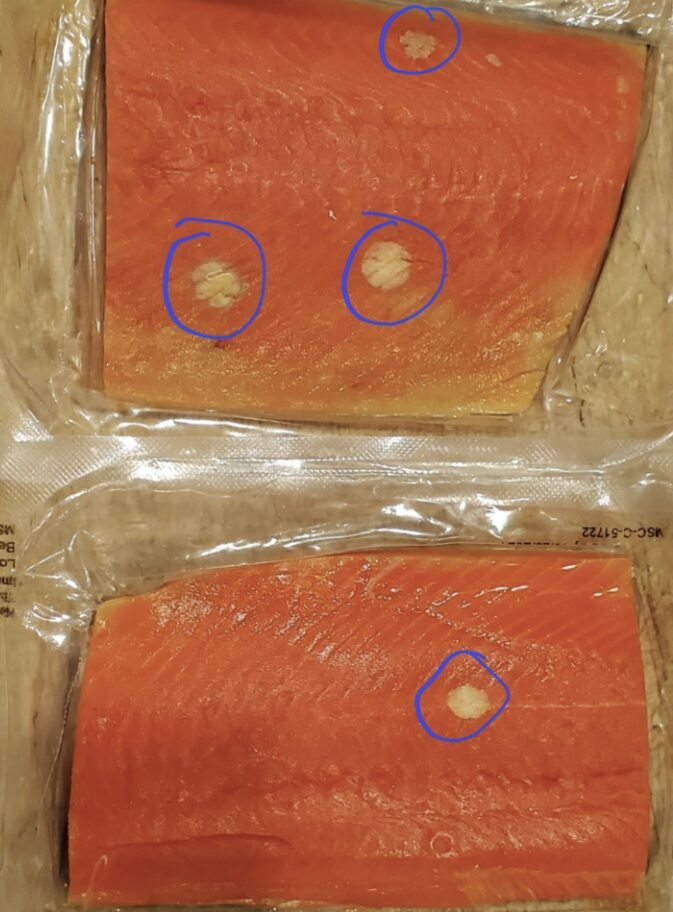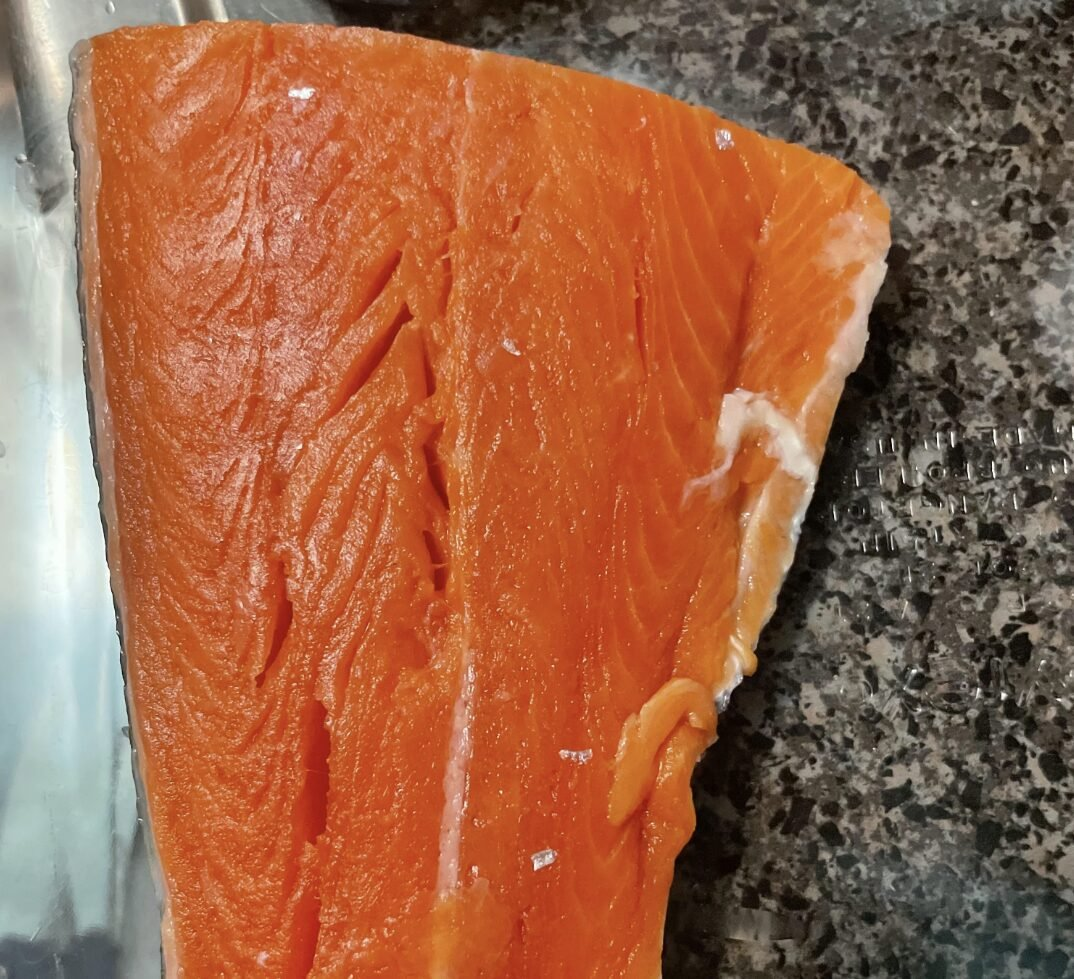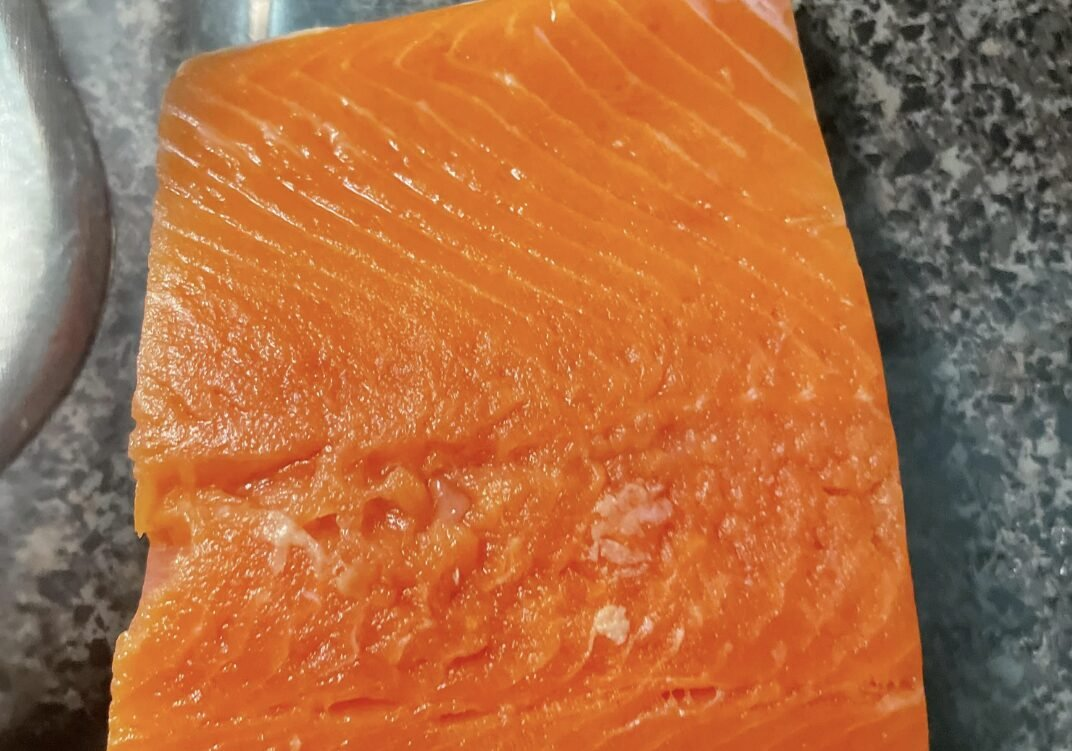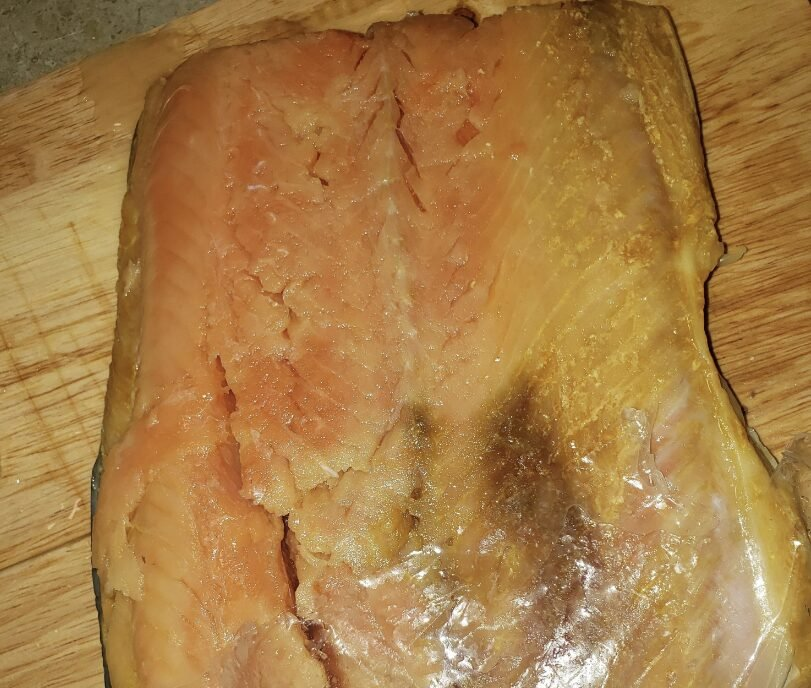Salmon is a household favorite, prized for its rich flavor, versatility, and health benefits. However, it can be shocking to discover a strange yellow tint on a fillet you’ve been saving for a special meal. Don’t worry; you’re not alone in this. Yellow-tinted salmon is more common than you might think, and understanding the causes behind it can help you confidently decide if it’s still safe to eat.
A Shocking Discovery: What’s Up with the Yellow Tint?

Imagine preparing a delicious salmon dinner, only to thaw a fillet and find a yellowish hue where there should be beautiful pink. Many people assume it’s spoiled, but is that always the case? This discoloration can stem from various factors, and it’s not always a cause for concern. Let’s break down what might be causing that yellow tint.
Oxidation and Fish Fat: A Natural Process
Salmon is known for its high-fat content, which is why it’s so flavorful and nutritious. However, this fat can be sensitive to prolonged storage. Over time, the natural fats in salmon can undergo a process called oxidation, especially if the fish has been stored for an extended period. Oxidation can alter the color of the fat, causing a yellowish tint on the salmon. This color change doesn’t necessarily mean the fish has gone bad; it simply indicates that the quality may be slightly reduced.
When in doubt, check for other signs of spoilage, such as an off smell or slimy texture. As long as these indicators aren’t present, your salmon is still safe to eat.
Improper Packaging and Freezer Burn: A Common Culprit
Did you know improper storage can also lead to discoloration in frozen salmon? When salmon isn’t tightly sealed in its packaging, it becomes susceptible to freezer burn. This phenomenon occurs when air gets trapped in the packaging, causing moisture loss in the fish. The result? Discolored patches, often yellow or white, on the flesh.
The good news is that freezer burn doesn’t make the salmon unsafe to eat. Although these sections may taste slightly dry or tough, you can trim off the affected area and cook the rest as usual. Just make sure to pack your salmon properly next time to prevent freezer burn from happening again.
Natural Variations in Salmon Species

Not all salmon is the same. Depending on the type of salmon, slight color variations are common. Wild-caught salmon, for instance, may have a yellowish hue in certain parts of the flesh, especially around the belly. This is due to their diet, which often includes crustaceans and algae that contain natural pigments.
Farm-raised salmon, on the other hand, usually has a more consistent pink color because they are fed a controlled diet. Still, even farm-raised salmon can occasionally show slight color variations. If you see a yellow tint on your wild-caught salmon, it might just be a natural feature rather than a sign of spoilage.
How to Check if Your Salmon Is Fresh

A yellow tint doesn’t always signal trouble, but it’s wise to be cautious. When in doubt, there are a few reliable freshness tests you can perform:
- Smell Test: Fresh salmon has a neutral scent reminiscent of the ocean. If it smells overly fishy or sour, it’s best to discard it.
- Touch Test: Press down on the salmon’s flesh; it should be firm and spring back. If it feels mushy or fails to bounce back, that’s a red flag.
- Visual Inspection: Check for signs of slime, which can indicate bacterial growth.
Once your salmon passes these tests, feel free to trim off the discolored section and cook the rest. With the right preparation, your salmon will still be delicious and enjoyable.
Tips to Prevent Yellow Tint on Your Frozen Salmon

Preventing yellow-tinted salmon starts with proper storage. Here are a few tips to keep your salmon looking and tasting its best:
- Seal Properly: Before freezing, ensure your salmon is airtight. Vacuum-sealed packaging is the best option, but if you don’t have that, plastic wrap followed by a freezer bag works well too.
- Label and Date: It’s easy to lose track of how long something has been in the freezer. By labeling and dating your salmon, you can stay within the USDA’s recommended 3 to 8 months for optimal quality.
- Rotate Stock: Follow a “first in, first out” approach, meaning you should use older items first. This keeps you from ending up with forgotten, freezer-burned salmon.
Cooking Yellow-Tinted Salmon: Tips for the Best Results
Cooking salmon with a slight yellow tint doesn’t mean compromising on taste. Here’s how to get the best out of it:
- Trim Discolored Areas: If the yellowing is limited to a small section, trim it off. The remaining flesh is likely unaffected in taste and texture.
- Choose Bold Flavors: Pair your salmon with strong, complementary flavors like lemon, garlic, and dill. These flavors can mask any slight dryness caused by freezer burn, resulting in a delicious dish.
- Cook to Your Preference: Whether you prefer grilling, baking, or pan-searing, salmon with slight discoloration can still deliver a great meal. Just keep an eye on it to avoid overcooking, which can make it dry.
Conclusion: Embrace the Unexpected Character of Your Salmon
In the end, a yellow tint on salmon doesn’t have to be a deal-breaker. From fat oxidation to natural color variations and freezer storage issues, several factors can contribute to this unexpected color change. By understanding these causes, you can approach yellow-tinted salmon with confidence.
With a quick smell check, visual inspection, and proper storage techniques, you can prevent discoloration in the future and make the most of every fillet you buy. So next time you notice a yellowish hue, remember it’s just a little extra character on your delicious, nutrient-packed salmon.


